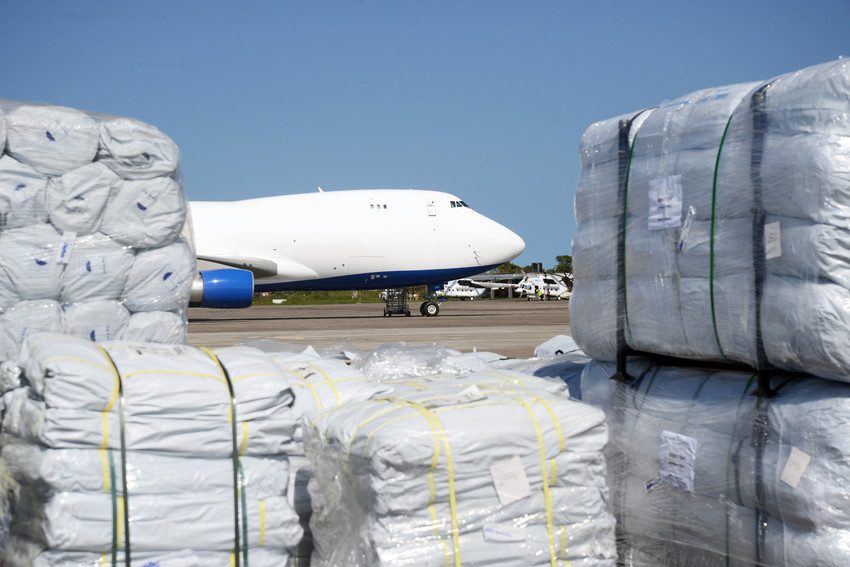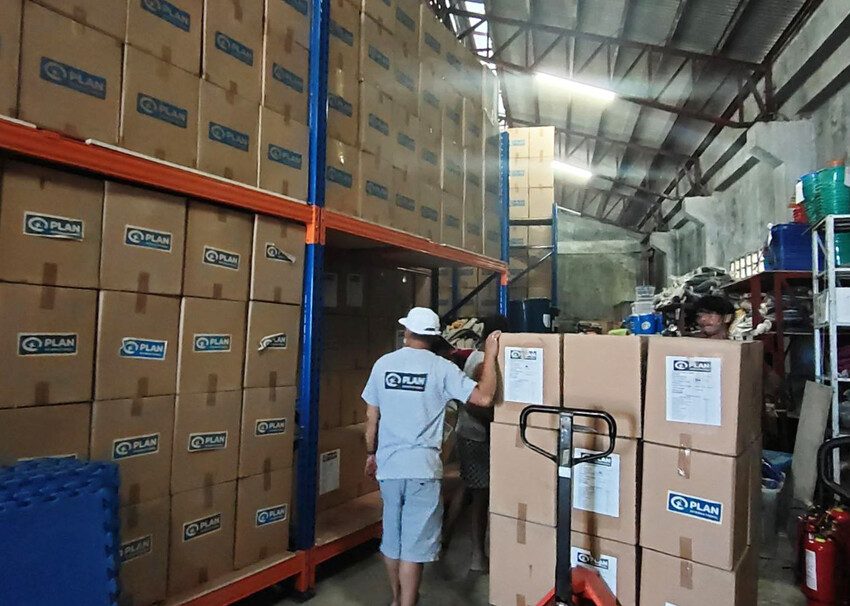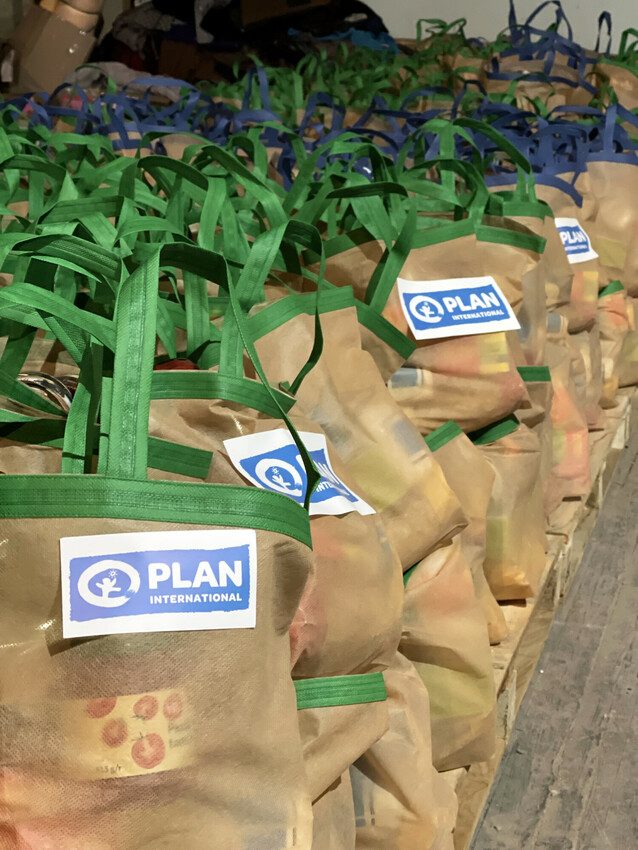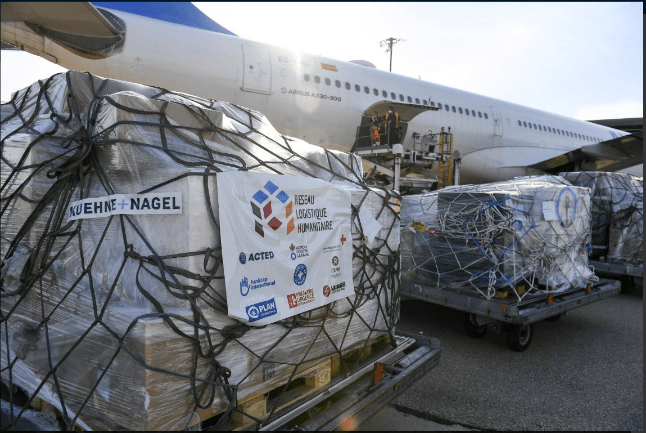Supply chain changing the face of humanitarian aid
13 December 2022Can a cooperative model answer some of the sectors most pressing questions?

© Plan International, Mozambique, 2019. All rights reserved.
Definition of ‘humanitarian supply chain’: The planning, procurement, storage, transport and delivery of different forms of supplies, works & services used for projects and to respond to emergencies. This includes the flow of supplies from origin to destination but also more complex work of forecasting, optimising resources, value for money to ensure the most efficient process, and decreasing the carbon footprint related operations.
Increasing humanitarian needs, unmatched by increased funding, require innovative ways of working, ways that generate more efficiencies, avoid duplication and increase the quality of goods and services by the aid ecosystem.
The ongoing hunger crisis is an indicative example showcasing how resources of humanitarian organisations do not keep up with what is really needed. Another example is the recent agreement on the 2023 EU budget. The agreement between the EU Council and the European Parliament concluded at around €1.8 billion for humanitarian aid. Civil society organisations estimated required amounts to be at about €2.5 billion, leaving a gap of €600 million.
Humanitarian organisations need to do more with less, in a world of changing geopolitical realities and shrinking humanitarian space. That is why humanitarians ongoingly challenge the status quo and ask themselves how to do things better: how to reach more people, how to make the most out of our resources, how to decrease the sector’s carbon footprint.
Could humanitarian supply chain be a big part of answering these tough questions?
Humanitarian supply chain 101
In simple terms, humanitarian supply chain management (SCM) is defined as buying and delivering requested supplies and services at the places and times they are needed, while ensuring best value for money, in the immediate aftermath of any emergency and reconstruction situation, including items that are vital for survival, such as food, water, or shelter.
Humanitarian SCM brings a technical perspective (planning, information gathering, warehousing, pre-positioning, transportation, distribution) as well as a strategic one (decision making, co-ordination, inter-organisational co-operation, public-private partnerships).

Humanitarian supply chains are complex and technical. Discussions outside groups of technical experts do not always go into detail – but are we shying away from the revolution the humanitarian sector needs?
Around 60-80% of the cost of an emergency response is within the supply chain. Adding to this, a report examining 30 humanitarian organisations showed that around $6 billion is spent on supply chains anually[1].
The numbers speak for themselves. Procurement is power – not only for the people we buy for but also for the people we buy from.
The future of humanitarian supply chain
The humanitarian sector is at a turning point when it comes to managing resources. INGOs compete in several spheres – supply chain should not be one of them.

That was the simple premise behind the creation of the RLH Coop (Réseau Logistique Humanitaire): the first humanitarian logistics cooperative pooling resources and connecting actors by optimising costs and deadlines of the humanitarian supply chain.
The cooperative was created by 9[2] NGOs with a simple aim: increase the impact of aid by maintaining our individual strengths while combining our supply chains.
RLH is an ambitious initiative. It aspires to create many and different benefits for the sector, from financial and time savings, to carbon footprint reduction and increased quality. Importantly, it envisions supporting smaller organisations with access to resources, promoting the plurality of actors and voices in a tangible manner. In such challenging times, efficiency gains and a reduced environmental impact can only be created by innovative, collaborative, and data-driven ways of working together across organisations.
The initiative, supported by the European Commission DG ECHO, is also behind the operation of EU Air Bridges that took place in 2020 in 21 countries worldwide, at a moment when COVID-19 demonstrated an unprecedented obstacle to humanitarian operations. Plan International has also contributed to initial funding of the RHL via the Plan Innovation Fund, a fund that allows the organisation to support new ideas that have the potential for significant impact and scale.
The humanitarian sector is changing. It is the responsibility of everyone – humanitarians, organisations, donors, partners – to make sure we contribute to making it fairer, more efficient, more effective and, above all, always with people at its very centre.

[1] “Strength in Numbers – Towards a more efficient humanitarian aid: Pooling logistics resources”, 2019, RLH. Link.
[2] The RLH Coop (Réseau logistique humanitaire) was created in 2021 by Plan International, Acted, Action Against Hunger (ACF), French Red Cross, Humanity and Inclusion, Médecins du Monde, Oxfam Intermon, Solidarités International and Première Urgence Internationale.




